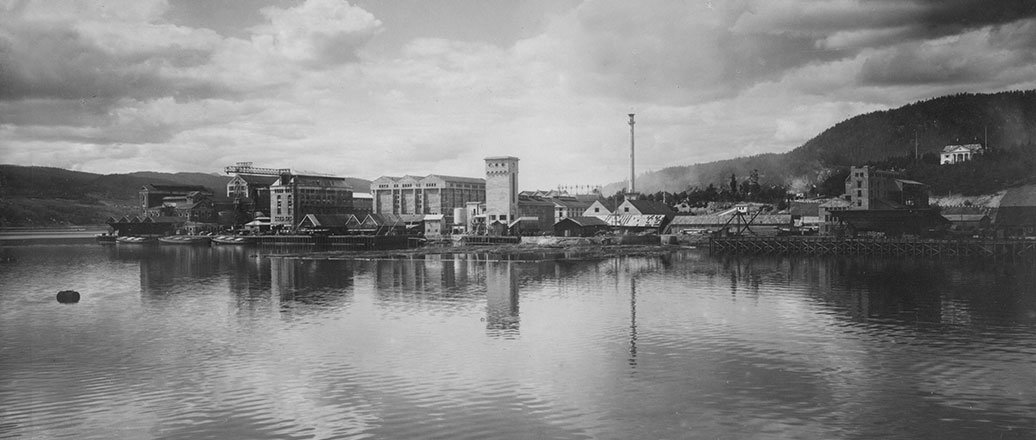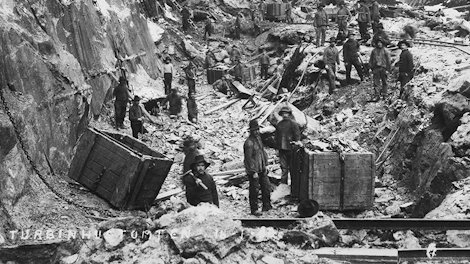A cloudless sky seen from a global political perspective, Prime Minister Gunnar Knudsen said in May 1914 at the centennial celebration of Norways constitution. Its not strange then that the outbreak of World War I in July/August 1914 took Norwegians and Hydro by surprise.
Norway was a neutral country, and business was not bound to any specific political line. Hydro’s management was determined to proceed with signed contracts on sales of both calcium nitrate and ammonium nitrate. But pressure soon mounted, especially from the allied countries, France, England and Russia, to take a different approach.
Hydro’s management later decided to increase deliveries of calcium nitrate and ammonium nitrate to the allies, but the company continued to sell to the German market. The situation was by no means simple. Hydro had supply contracts with the Germans on the one hand, and there was substantial French ownership in the company on the other. Rumours circulated that the shipping of goods across Skagerak was monitored by submarines.
In the event of hostile action…
Management believed the company’s facilities would be key targets in the event of an attack on Norway. The company took precautions – acquiring 10 anti-aircraft guns, eight cannons, five machine guns and 17 searchlights. Flak guns were installed at both Rjukan and Notodden. Essential and vulnerable parts of the production facilities were patrolled. Dam installations were protected, and a telephone system was established to warn against air attacks. Fortunately, there were none.
Internal strife
External strife eventually made its way into the company. Harald Bjerke, who was deputy managing director, cooperated well with French ownership interests in Hydro. But the French regarded Eyde as pro-German. Internal strife and ownership differences also impacted Hydro’s daily management. As the period of major construction work came to completion, it became clear that the company needed a stable administration.
Sam Eyde was not the man for day-to-day operations. His dynamic nature was unsuited to “large meetings about small issues.” Eyde saw the need for change himself, but at the same time found it difficult to let go.
Sam Eyde steps down
The wish for reorganization gradually gained approval. In 1915, Sam Eyde had been Hydro’s managing director for 10 years, but another two years passed before he was succeeded by Harald Bjerke.
Eyde’s resignation gave rise to yet another demonstration of the strong bond between him and the company’s workforce. A large statue of Eyde was erected in Rjukan in 1920, and the celebrations continued for two full days.
Haber-Bosch – to be or not to be
The Birkeland/Eyde process was very energy intensive. Around 1910, Fritz Haber and Carl Bosch in Germany developed a new technology, the Haber/Bosch process, or ammonia synthesis. See process diagram. The isolation of the Germans during World War I was a factor in the further development of this technology.
Competition in the fertilizer industry sharpened, but Hydro had a strong market position, due, amongst other things, to its early start and subsequent ability to pay off its loan obligations.
The company’s first response to competition was an improvement in the arc method. By 1925, it was clear that competition would become even tougher. Badische launched a calcium nitrate product and merged with two other German companies to form the powerful IG Farbenindustrie.
Sam Eyde was again on the scene – and not only did he push for Hydro to adopt ”the ammonia method,” he also formed a partnership with IG Farben. Managing director Harald Bjerke resisted and subsequently resigned his position. He was followed by Axel Aubert. In the end, Eyde pretty much got his own way. IG Farben purchased 25 per cent of Hydro’s shares. The German concern also assumed responsibility for the marketing of Hydro’s products outside Norway.
New period of construction in Telemark
In 1927, Hydro purchased a licence to employ the ammonia method, and by the beginning of 1928, had already started building ammonia factories and adapting the production line at the plants in Rjukan and Notodden in the Telemark area of Southern Norway. The decision in 1927 to alter the plants is mostly to the credit of managing director Aubert. This led to a quadrupling of capacity. Hydroelectric power was used for producing hydrogen by hydrolysis. This later proved to be another advantage for Hydro.
In the second half of the 1920s, the development of electricity technology made it possible to send hundreds of thousands of kilowatts over the transmission network. Production plants no longer had to be built near the power source. Hydro could now build a facility by the sea – closer to the market. The alliance with IG Farben, leading technology and Hydro’s market strength paved the way for the construction of a new fertilizer plant in Norway. The site chosen wasHerøya at Porsgrunn, where the Tinnelv river that flows through Rjukan and Notodden runs into the Oslo fjord.
Updated: May 15, 2024











